Home » Jazz Articles » Interview » Peter Nero: The Laughter and The Challenges
Peter Nero: The Laughter and The Challenges
In July 2009, All About Jazz published an interview with legendary pianist and Philly Pops maestro Peter Nero. That interview jumped between his early musical development and his current 30-year tenure as founder and music director of the Philly Pops. There wasn't time then to ask him about what turned out to be the subject of the current interview, the long intervening period including his salad days as a pianist, an ongoing venture which he continues to pursue in addition to being director of the Pops.
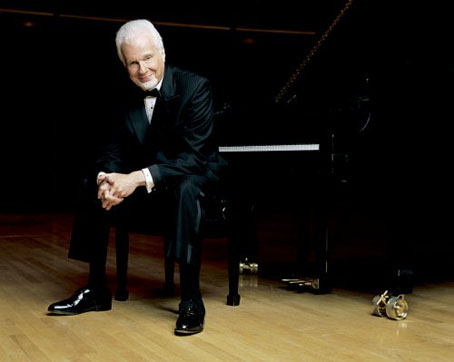
On the occasion of this, his second All About Jazz interview, Nero seemed more in the mood to "free associate" than to give a chronology of his career, so he ranged from topic to topic like an improvising jazz musician, but always sticking to the tune—namely, his career from the 1960s to the present. As in Louis Malle's classic film, My Dinner with Andre (1981), the interview gives an intimate glimpse of Nero, going wherever his recollections take him.
It was a sheer delight to talk freely with a man of such remarkable accomplishments, who is also a warm, cordial individual with a sense of humor that he incorporates in his music. Reminiscences about Frank Sinatra, Mel Torme, Lynn Roberts, Marian McPartland, Billy Taylor, Bill Dana and Bob Newhart comingled with observations about his early struggles on the circuit, making the big time, and the joy of music. During the last part of the interview, Nero provided insights about his use of humor in music, a sideline which has charmed, shocked and surprised audiences from his early days to the present.
Chapter Index
- The Early Days Before Fame
- World War II Canteen Music
- More About Coming Up on the Circuit
- On the Rise
- More Asides
- Working with the Philly Pops
- Working the Audience: Humor and Music
- World War II Canteen Music
All About Jazz: In our previous interview, you shared your life story from your childhood and days as a music student up to where you were a contestant on a couple of TV music competitions, signed with an agent who gave you the name Peter Nero, and obtained your first record contract. In the decades following, you rose to the status of one of the most popular musicians in the world. Your rise must have seemed meteoric.
Peter Nero: However, I wasn't making any money back then when I started out.
AAJ: But didn't you have a best-selling record right at the starting gate?
PN: No. They were a success by record company standards, but in those days, they weren't that concerned about individual record sales; they were looking for at least a 20-year career for a pianist on records. They did it the slow, hard way. My first album sold only 35,000 copies. That barely covered costs because we used a 35-piece orchestra (the number 35 was just a coincidence.) Like the Hollywood film studios, the record companies nurtured the artists, brought them along, and looked towards a long future.
AAJ: They thought of you as a future investment and weren't concerned about sales at the beginning.
PN: They thought of all artists in that way. When I joined RCA Victor Records, they were looking for a long-term pianist, who turned out to be myself; a male vocalist, John Gary, who had a short but brilliant career; a female vocalist, Ann-Margaret (she broke in as a singer); a miscellaneous novelty group, the Limelighters, folk singers and comedians who played a lot of colleges; and a horn player, Al Hirt, who was down in New Orleans. And they set aside $100,000 per year for promotion money.
It's so different nowadays. If you're new, you have to walk in the door with a finished product. And if you sign with a big record company, if you don't sell a million copies, they'll drop you; and for your next record, you have to have the finished product and beg them to distribute it. So if I came up today, I wouldn't have the same advantages at all.
At that time, aspiring musicians like myself had to start out playing clubs. The first club I played in New York was the Embers, a good music room that featured instrumentalists, although Jonah Jones would sing once in a while when he wasn't playing trumpet choruses. After that I played Basin Street East, owned by the same people I think, and it was pretty much of a show setup. You'd play for 30 minutes or so and then there would be an intermission pianist, which is actually how I first broke into the business, playing intermission piano at the Hickory House at age 21.
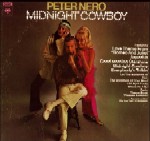 AAJ: So you really started out the same way that hard core jazz musicians do, playing small clubs,
AAJ: So you really started out the same way that hard core jazz musicians do, playing small clubs,
PN: Right. I started out playing saloons—they're called clubs but they're really saloons. Did I ever tell you about Jilly's?
AAJ: Wasn't that Sinatra's hangout?
PN: Yes, that was a great place for me to grow as a musician. At the other clubs, the pianos were crappy, and others discouraged me from playing jazz. At the Village Vanguard they had a trio playing jazz for dancing and I was playing intermission piano as people paid their bill.
AAJ: They had dancing at the Village Vanguard?
PN: Oh, yes!
AAJ: But it's a little hole in the wall!
PN: The maximum capacity said 150, but they squeezed over 200 people in there.
AAJ: Do you recall the owner, Max Gordon?
PN: Of course, and he also was a co-owner of the uptown club, The Blue Angel, and I played intermission piano there as well. Bart Howard, who wrote "Fly Me to the Moon," was their house pianist and I subbed for him. I got bored during the featured artist part of the show, usually a singer so I worked the lights to amuse myself.
AAJ: All this nostalgia reminds me that I wanted to ask you about the upcoming concert of the Philly Pops on March 28, 2010, where you're going to recap WWII dance music in a show called Stage Door Canteen.
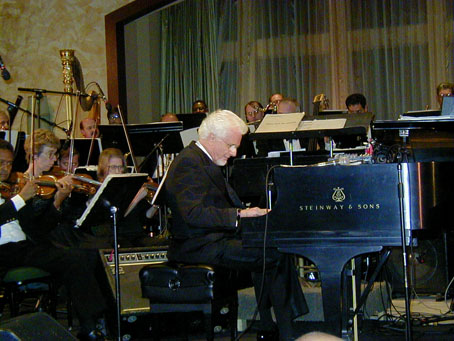
PN: We already did one show like that five years ago with the same singer, Lynn Roberts, the quintessential big band singer She's still the best. She comes out dressed in St. John's knits, and just sings, no vocal mannerisms, no choreography, no histrionics, just gets out there and sings like an angel!
AAJ: For those of us with an interest in jazz history, what some of these allusions to dancing and WWII add up to is the change from swing music, which was for dancing, to bebop which was entirely for listening. And you came up around that time. During the war years, there were Glenn Miller, the Dorsey Brothers, Woody Herman, and so on, and people danced to their music. Then, after the war something happened—they stopped dancing to jazz. As leader of the Pops, do you think perhaps there ought to be a revival of dance music?
PN: We play a lot of big band music, and we've actually had professional dancers on stage, but you know something—we got complaints! The audiences felt it got in the way of listening to the music. I was surprised. I've sometimes encouraged the audience themselves to dance but there weren't any takers!
AAJ: Perhaps it reflects changes in the culture. But for the moment, let's continue with your career development. I was surprised by your earlier comment because I thought your rise was meteoric. But you were saying it was a bit of a struggle at the beginning.
PN: It was not meteoric but I think it was better that way because the faster you go up, the faster you go down. What do you do after the big success? In this business, you can't level off because you are going downward. You have to keep doing something creative that sells as well. I've always managed to incorporate the music of the day into whatever I do. It doesn't lock me in to any one idiom and I'm always trying to grow in all respects as well.
More About Coming Up on the Circuit
PN: Getting back to my bio, after I played Basin Street East, I then went on the national circuit. I did the London House in Chicago. Again, they didn't have singers—I don't know why, maybe because there was an excise tax on them—they mostly had piano, with an occasional horn player like Jonah Jones or Dizzy Gillespie. They were also restaurants. The London House was one of the best steak houses in Chicago. I did Baker's Keyboard Lounge in Detroit, which, as the name suggests, featured pianists. Toronto had two rooms, one was the Colony. And there was the Town House. Oscar Peterson used to play one of those two places all the time. I played at the Colony on the main drag. They had a bar setup, balcony and tables. It was a tough room to play, and all they had were piano trios. In Cleveland, a club closed due to a fire so everyone went over to the Hickory Grille. I used to come back and play there periodically. In order to develop a following, you had to play these clubs and the owners signed you up for a three-year contract.
AAJ: At one club? That's unheard of now.
PN: One club, once a year, three weeks each stint. However, the pay was absolutely horrendous. They knew it would be worth it to you because you could put their name on a resume and get reviews in their town. In fact, the first time I played the London House, I had to borrow money in order to make the gig. I had to pay the musicians, transportation and the hotel, so we guys stayed three in a room! The room had black and white tiles, like a flophouse! But it only cost $3.50 a guy for a night and it was right down the street from the London House, which is a pretty nice area. When I did Baker's Lounge in Detroit, I stayed at a motel.
AAJ: When did this take place?
PN: It started in the fall of 1961. The first album had come out April 1st of that year.
AAJ: You had told me that you met George Shearing on one occasion in Chicago.
PN: That was at the London House. The first thing RCA did was to send me on a promotion tour: 12 cities in 14 days. We started on the West Coast. I had come out of the clubs, and then all of a sudden, I heard my music on the radio! That was the biggest thrill of all. See, I had become very skeptical after playing club intermissions and piano bars. The singers made money because while they were doing romantic songs, $50 bills flew across the piano—they were being tipped big because the guys in the audience were romancing their girlfriends! When I played, I had my bassist and we played the fastest tempos I possibly could, and I felt very conspicuous because the audience did not consist of jazz fans, and the only place they loved my playing was at Jilly's in New York.
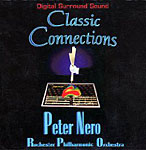 At the Hickory House, I played opposite Marian McPartland and Billy Taylor, the latter becoming a mentor for me. Much later on, I had him as my guest artist in Philly with the Philly Pops and in Tulsa with the Tulsa Philharmonic, which I worked with for nine years. I conducted for Billy, Dizzy and Shearing and at the end, sat opposite them at a second Steinway Grand and we just blew choruses for about 15 minutes. When we did the same concert twice, some of the orchestra players wanted to know how we had time to rehearse and learn two different versions (LOL). In the early 1980s, I became pops music director of the Florida Philharmonic and built the series from zip to 24 concerts per season. I had to coax Dizzy to let me sit in with him and he, being skeptical, finally agreed to run through a head chart on a B flat blues and at 200 mph. After the run-through, his rhythm section made a bee line for me to give me their business cards. Dizzy's gone but they're still here. Ask 'em.
At the Hickory House, I played opposite Marian McPartland and Billy Taylor, the latter becoming a mentor for me. Much later on, I had him as my guest artist in Philly with the Philly Pops and in Tulsa with the Tulsa Philharmonic, which I worked with for nine years. I conducted for Billy, Dizzy and Shearing and at the end, sat opposite them at a second Steinway Grand and we just blew choruses for about 15 minutes. When we did the same concert twice, some of the orchestra players wanted to know how we had time to rehearse and learn two different versions (LOL). In the early 1980s, I became pops music director of the Florida Philharmonic and built the series from zip to 24 concerts per season. I had to coax Dizzy to let me sit in with him and he, being skeptical, finally agreed to run through a head chart on a B flat blues and at 200 mph. After the run-through, his rhythm section made a bee line for me to give me their business cards. Dizzy's gone but they're still here. Ask 'em.
AAJ: Did you do pops or classical?
PN: My pops consisted then and does now of jazz and classical.
AAJ: Who did the arrangements for these large orchestras?
PN: If they were for piano and orchestra, I did them. Also had a library of about 600 more that I had done for 50-plus recordings. I also wrote charts for orchestra alone and farmed out the rest. As Andre Previn said in his book, I got into conducting out of self defense and started in the early '70s. In the early '60s, I did two albums with Arthur Fiedler and the Boston Pops. One had the "Rhapsody in Blue" and six arrangements of Gershwin tunes and the second, the Gershwin "Concerto in F" and a piece I wrote called "Fantasy and Improvisations."
AAJ: So, your rise wasn't as slow as you suggest; a lot happened in just two years. From clubs to radio and the Boston Pops.
PN: During my stint at the lounges, I got my first concert gig, at the University of Maryland in College Park in their field house. That was $1,250 for the night, pay your own hotel, transportation and musicians, while the London House was $1,000 for the week with the same deal. So the pay got a lot better.
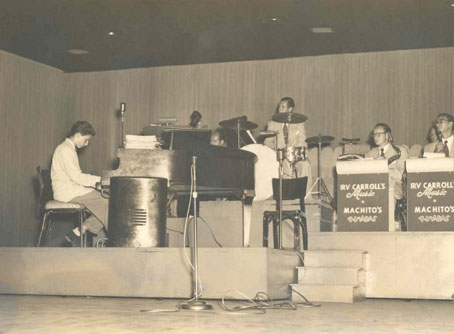
AAJ: Somewhere during that time, you started coming up.
PN: Well, that first concert really broke the ice. At that time, the colleges were a big venue to play. There were the likes of Peter, Paul and Mary and The Limelighters. One time, Simon and Garfunkel, who were just starting out, opened for me. It was at a field house at Bradley University in Peoria, Ill. I heard them warming up and turned to my musicians and said, "Who the heck is that?" They said, "That's your opening act, Simon and Garfunkel." I'd never heard of them, but they were getting popular with the young people with their recordings. They did the first half of the evening, and the kids tore the house down. A tough act for a pianist and trio to follow.
AAJ: That's indicative of the way the whole music scene was changing at that time.
PN: Yes, The Beatles changed everything. When they came over in 1964, the record companies made me go from standards to what were called "cover records." We'd look at the pop charts, and out of 12 top tunes, we'd pick out those we felt would get up the charts, so everything we did were instrumental versions of vocal hits.
AAJ: So around that time, you began to develop an audience and make a good living, making the necessary adjustments.
PN: But, look. Comedian Bob Newhart's first album sold a million copies, the first comedy album that sold that many. I went out on tour with him around 1963. The people that owned the London club owned another club in downtown Chicago, Mr. Kelly's, a supper club. It was Bob's home town, and he signed up with them, as he was breaking through with his album. During that time, I had to fulfill the remaining two years of my contract with them at the London House. Newhart had the same deal at Kelly's, which was ludicrously small for him, and he paid them three times his fee to get out of the contract.
AAJ: Frank Sinatra did the same thing with Tommy Dorsey.
PN: The point is, I started a heavy climb, and the money got better—there was no doubt. I was building an audience. I did some singles but they didn't get on the charts, so I was classified as an album artist. I didn't have a million-selling album or single until The Summer of '42 (Columbia, 1973), which was in 1972. So it took me 11 years to get there. And in between, I'd already done about 30 albums! I had done 24 with RCA and six with Columbia.
AAJ: Did you use a particular group of musicians for those albums?
PN: Oh, yes. I used the same New York guys. Bobby Rosengarden was the drummer. George Duvivier was the bassist, although Milt Hinton was on my first album. Duvivier had a strong sound, he was a monster. For the recording with the Boston Pops, I used him, with Bobby on drums, because my regular trio at that time couldn't do orchestra work as well. George is a legendary bassist, a big guy, and he could play the fastest tempos anyone ever heard, and all with the wrist, no finger plucking.
 On the first rehearsal in Boston with the Pops, which consisted mostly of players in the Boston Symphony, including the principals in each section because on one album I did Gershwin's "Rhapsody in Blue" and on the other I did the "Concerto in F." We did two rehearsals, two concerts, and then the next morning we recorded the whole album in three hours straight. We did it right in Symphony Hall, on the floor—they took the tables and chairs out, and let the drapes hang down as sound barriers. It was 1963 and I was 29 years old. The adrenalin was really flowing. In 1965 we did the "Concerto in F" pretty much straight through because it had very few solo passages I could re-record. It was the fastest "Concerto in F" ever recorded. One record reviewer wrote, "This is what the Boston Pops sounds like when they're double parked."
On the first rehearsal in Boston with the Pops, which consisted mostly of players in the Boston Symphony, including the principals in each section because on one album I did Gershwin's "Rhapsody in Blue" and on the other I did the "Concerto in F." We did two rehearsals, two concerts, and then the next morning we recorded the whole album in three hours straight. We did it right in Symphony Hall, on the floor—they took the tables and chairs out, and let the drapes hang down as sound barriers. It was 1963 and I was 29 years old. The adrenalin was really flowing. In 1965 we did the "Concerto in F" pretty much straight through because it had very few solo passages I could re-record. It was the fastest "Concerto in F" ever recorded. One record reviewer wrote, "This is what the Boston Pops sounds like when they're double parked."
AAJ: Oscar Levant recorded "Rhapsody in Blue" and "Concerto in F" a few years before that. Did you know him?
PN: No, but I could tell you a funny anecdote about him. Levant was so impressed with Vladimir Horowitz' technique, he was so amazed by it, as was everyone else, that when he met Horowitz, as Horowitz was leaving for Europe, Levant quipped, "When you go to Europe, do you take your octaves with you or do you ship them ahead?" [laughter]. Levant knew that Horowitz could play with blinding speed, color, phrasing, accuracy and dynamics. I thought that remark was so funny, because I thought to myself, "Yeah, Vlodya, ship them ahead, because they'll get there before you anyway!"
AAJ: I recently heard a vintage recording of Horowitz playing the Rachmaninoff "Third Piano Concerto" live with the New York Philharmonic. The speed and artistry that he displayed was truly amazing.
PN: Do you know that Rachmaninoff himself was an excellent pianist but after hearing Horowitz perform it, he never played it again. But it wasn't so much that he couldn't keep pace with him, it was the whole conception of it. It really takes someone from the outside to see what it is, because the composer himself is so involved in writing it. I myself have done some arrangements which I could only really understand two years after I wrote them because when I wrote them they were just coming out of me without knowing exactly why.
AAJ: It's very interesting to see how you have been evolving as a musician ever since you started out. I was talking earlier with your Philly Pops manager Ernest Toplis and he pointed out how you've kept evolving even during the time period that he's been working with you. Getting back to your bio, so your career is developing and then, at this moment of adrenalin rush in Symphony Hall, you have what psychologist Abe Maslow called a "peak experience," an electrifying moment when you make that key change in the "Concerto in F." It must have been a stunning moment in your life.
PN: Yes, but I was prepared for it because everything I've done in my life has led to what I've been able to do later on, as, for example, that story I told you in the previous interview about using ideas I got as a teenager playing Russian dance music for an album I made years later called "Midnight in Moscow," one of my RCA albums (Hail the Conquering Nero, RCA 1963). As a musician, you use everything you've absorbed, whether you realize it or not. The student musicians I meet always want to know what advice I have about being a working musician, and I always say, "Play whatever is thrown at you because whatever you learn and experience, take it in, because you're going to use it later as part of your entire being, and you never know when it will come in handy."
AAJ: So somewhere around the time you recorded the Gershwin compositions, you began to succeed on the world stage.
PN: Well, during that time, RCA put out three of my albums per year. It was by contract, and that's how they built their catalog. Each album kicked up the next one, based on the appeal to the fans. For instance, I did a Burt Bacharach album when his songs were hot. The fans loved his music, and they discovered me through that, and went back and bought my earlier albums. So my records really started to sell.
AAJ: For a while, you collaborated with singer Mel Tormé.

PN: Not on a recording as such, but when I did the score for the film, Sunday in New York, which was in 1963, there was a song intended for a male jazz singer, and there were two guys who might do it well: Mel Tormé and Buddy Greco. The film studio went for Mel because he was a bigger name at the time, but for me it was his phrasing that was the most important thing.
AAJ: What's it like working with vocalists like Tormé, or with Sinatra for that matter? These are guys who know music well, they aren't just crooners. Same with Jack Jones, who you had on board recently with the Philly Pops.
PN: Jones brings in his own rhythm section, though, including the pianist, when he works with our orchestra. When I go on the road, I bring my own rhythm section, too, and I conduct for myself. Jack doesn't conduct, but his pianist, Mike Renzi, is a great jazz player, number one in New York in terms of gigs. I've conducted with him playing and I like to hear him up close and watch him. When he plays, he's very serious but what he's playing is so witty. That's also the way I hear Horowitz on the Rachmaninoff "Third." In the second movement, the scherzo, there's a thing that sounds like a drunk hiccupping and staggering on the street. It's a light-hearted and witty interpretation. Other players do it too cut and dry. I think that Rachmaninoff meant it to be played the way Horowitz did. In the Chopin "G Minor Ballade," which I studied when I was younger, there's an internal voice in there which Chopin puts right in your face. Not all pianists bring out that line but Horowitz showed us where it belonged.
AAJ: Humor is a significant part of music, going back to Haydn and Mozart. I'm reviewing a recording by Ximo Tebar, a jazz guitarist from Spain, based on the music of Erik Satie, the French composer. It is serious music but it is very humorous in sections. Both Satie and Tebar know how to use music to make listeners laugh.
PN: How does Martial Solal sit with you?
AAJ: I'm not familiar with him.
PN: You've got to hear him. He's 80-years old now. He appeared at the Village Vanguard a few years ago. He's French. He plays solo piano and is a phenomenon of crossover.
AAJ: Did you ever hear of Bernard Peiffer?
PN: I never had personal contact with him, but I heard him play—a very interesting classically-trained jazz pianist.
AAJ: He taught a number of the best contemporary jazz pianists who came up in the Philadelphia area—Uri Caine, Tom Lawton and Don Glanden, among them. Peiffer too was originally from France.
PN: I heard him when I was at the Hickory House. He had tremendous chops.
Times Spent with Sinatra
AAJ: What are some of the most memorable moments of your career, in your own terms, not what other people might think?
PN: If you ask me a question like that, I don't know where to start. I could mention probably a hundred of them. Certainly up there at the top was working in the same show with Frank Sinatra. I actually stayed at his home for two days with six to eight other performers. This was a benefit in Palm Springs for his wife's favorite charity, the Palm Springs Children's Hospital. Quincy Jones opened up with a couple of big band pieces. The master of ceremonies was Roger Moore, the actor. Then Buddy Greco, and then Diane Schuur. Mel Tormé was also in the show. That was only the first half. The second half was Liza Minelli, Sammy Davis Jr., and Frank. And we all got to stay at his compound.
AAJ: Everyone wants to know about Frank Sinatra.
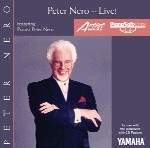 PN: I got to know him pretty well. I was always invited to come to see him back stage when he performed in Vegas. Part of his contract at Caesar's was that he had to sit in the lounge for a while, so people in the casino could see him. I remember before one performance, he told me he was studying with the opera singer, Robert Merrill. He was very serious about his music. As the years went by, however, he was burning his vocal chords out. Nevertheless, he never lost his core of fans. One time, I was supposed to do five days with him at Radio City Music Hall. The morning after opening night, I got a call that Sammy Davis Jr. died. Sinatra got on his plane, went back to L.A., and canceled the rest of his concerts at Radio City. They re-booked him in June, and I was asked to play, but I had a commitment at Westbury Music Theater and couldn't get out of it.
PN: I got to know him pretty well. I was always invited to come to see him back stage when he performed in Vegas. Part of his contract at Caesar's was that he had to sit in the lounge for a while, so people in the casino could see him. I remember before one performance, he told me he was studying with the opera singer, Robert Merrill. He was very serious about his music. As the years went by, however, he was burning his vocal chords out. Nevertheless, he never lost his core of fans. One time, I was supposed to do five days with him at Radio City Music Hall. The morning after opening night, I got a call that Sammy Davis Jr. died. Sinatra got on his plane, went back to L.A., and canceled the rest of his concerts at Radio City. They re-booked him in June, and I was asked to play, but I had a commitment at Westbury Music Theater and couldn't get out of it.
When Sinatra was around, I was so nervous I could hardly play. In the early '60s, I was performing at the Hollywood Bowl, and I got a call from Jilly, who said, "Frank is having a going away party for Rosalind Russell at her house. She's moving to Jackson Hole, Wyoming." That's before anyone heard of that place. I met the whole crew of Frank's cronies, Kirk Douglas and all. I sat in on piano at that party. I didn't have a clue what I was doing. I was so petrified. I was overly concerned with "What's Frank gonna think?" He was a maven, no doubt. He knew what he wanted from rhythm sections. Fortunately, I didn't have to accompany him. That would have really worried me. When do you fill in, and when not? I never accompanied Sinatra on piano.
AAJ: When I think of Sinatra, I think about his musical resilience, his ability to do so many things well. Apropos of that, I notice that when you conduct, you seem to move so easily between the piano and the conductor's podium. It's almost mind boggling how you'll be conducting one minute, and a split second later, you're doing a very difficult piano part of the same piece, and then back again to the podium.
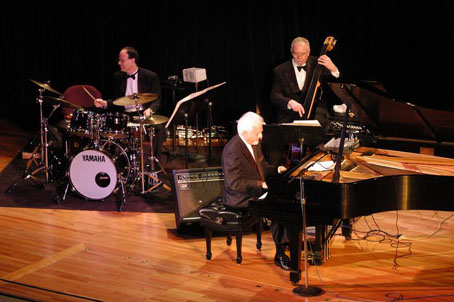
PN: Really? I don't give it a second thought.
AAJ: It comes across as effortless.
PN: One thing in my favor is that I'm left-handed. [Nero conducts with his left hand, so it's simple for him to turn from his right side, where the piano is located.] I put the podium very close to the piano leg, so I just have to take one step. It's harder for me to get back on the podium. Sometimes I'll give head cues while I'm playing. Also, I write the arrangements in such a way that when I'm playing rubato, I try to allow time to get up and conduct the orchestra. I rely a lot on my concert master, violinist Olga Konepelsky, part of the great pool of free-lance musicians in Philadelphia. But once we rehearse and we get on a roll, all the musicians are with me, and they watch my eye movements.
AAJ: Like Sinatra, the Philly Pops and you are very resilient—you guys can do anything that is called for.
PN: Not only can they play anything but how they can play the kind of schedules they have is beyond me. They have so many gigs, sometimes two or three a day, but they always give me and the music 200 percent.
AAJ: So what are your plans for the orchestra? Tell us more about the WWII music event. Is that a first?
PN: No, we've done it before. I've done a lot of research on those songs. And I was born in 1934, so I was seven when the war started in 1941. We all listened to those songs on the radio. Recently, I started to research them and the memories all came back to me. The lyrics and the titles were a history of what life was like during that time period. And they used metaphors and euphemisms, so "Don't sit under the apple tree with anyone else but me"—you know what that means: Adam and Eve in the Garden of Eden. "I'll Walk Alone" was another tune that captured the loneliness of that period for both the soldiers abroad and their girlfriends and wives at home.
AAJ: Clint Eastwood sang that song in his film, Flags of Our Fathers (2006).
PN: Back in January, we had Eastwood on recording do the narration for one of our Philly Pops pieces. Roger Kellaway was the composer.
AAJ: So this WWII thing has been on your agenda for some time. Some of the standards from then are truly beautiful.
PN: Very few were written for Broadway, and only some for a film. But most of it just consisted of popular songs, and they got air play because they reflected the feelings of the people of the time. They really tell the whole story of WWII. Last time we did this kind of thing, we closed it with "White Cliffs of Dover" which we segued into "When the Lights Go On All Over the World." Sadly, no one's doing those tunes anymore even though they are great songs.
AAJ: And they're such great tunes! The music of that time was fabulous. And all of the great bebop players came out of the swing bands if that era. Like Charlie Parker, Dexter Gordon, and a host of others did time with Billy Eckstine's band.
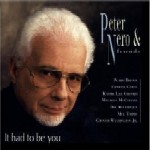 PN: No kidding! I didn't even know that Eckstine had a band!
PN: No kidding! I didn't even know that Eckstine had a band!
AAJ: Eckstine loved jazz, and he had all these great guys in his band. They'd have saxophone duels and so on. Few folks have any idea who and what came out of those swing bands.
PN: See, I woke up to jazz when bebop was in full swing, and all the pianists were trying to play like Horace Silver. He was a great pianist and he had this way of playing open sevenths in the left hand as he comped, so it was different from a cluster or a full chord there. Horace was impacted by Bud Powell in that way, but neither Art Tatum nor Peterson were.
Working the Audience: Humor and Music
AAJ: Now, I've noticed that you're very comfortable with an audience in a way only a few musicians are. Louis Armstrong, of course, was terrific with an audience.
PN: Yes, he had that great smile.
AAJ: And the growly voice. In a different way, you too warm up an audience by the way that you interact with them.
PN: You don't know how long it took me to get there. I used to be petrified. I was trained as a concert pianist—and they don't talk at all!
AAJ: Then you weren't a born entertainer?
PN: No, not at all. But I had a very smart manager. He got me my first recording contract with RCA in three days flat! But when I started in the saloons, I was petrified to speak and when I had to introduce the next act, I found myself just playing some blues while blurting out the words as fast as I could. My manager said, "When you play popular music for an audience, you're going to have to talk to them. I think I'm going to hire a writer for you." So he hired Bill Dana, the writer who created the "Jose Jimenez" role, and his brother was at one time concert master of the Indianapolis Symphony. Their real last name was Zathmary, a Hungarian name, I believe.
I flew out to California to meet with Dana, and it turned out he had listened to all my albums. He recorded our entire conversation on a reel-to-reel tape recorder. And he would improvise ideas by pulling things out of his repertoire. On one of my first albums, I had an arrangement of "Tea for Two" where I crossed it with the Tchaikovsky "Fifth Symphony." The two themes make a near-perfect counterpoint! It was meant as a musical joke. I went into dance time, and then did it as Tatum would do it, with half tones, very difficult, very fast, with a chord change every half-a-second. It became a trademark for me to combine tunes in that way.
I did the same thing with "Over the Rainbow" combined with the "1812 Overture." I did that because I got sick and tired of all the requests for "Over the Rainbow." I did the tune in all different ways, like Tatum, Garner, and then I used the harmony to changes styles from jazz to baroque, and then to Beethoven, then something Chopin-esque, staying in tempo, and then the theme from the "1812 Overture" naturally came in with "Rainbow" on top of it. And there was a slight dissonance there, but just enough to be funny and not ugly.
It was meant to be funny, and it was on one of my first albums. I like to get the audience to see what I'm doing. Sometimes, I'll show the audience how in 1923 Vernon Duke transformed the theme from Rachmaninoff's Symphony no. 2, third movement, to compose "I Can't Get Started With You." And then Eric Carmen, in 1976, wrote "Never Gonna Fall in Love Again" using the same theme, copping just about every note. Many pop tunes are based on the work of classical composers.
Getting back to "Over the Rainbow," it's interesting what happens when you do musical satire. The reaction to what I did was greeted with everything from absolute indignance to total hysterical laughter. Once, I did it at Baker's Keyboard Lounge in Detroit. A lady started laughing so hard that she literally fell off her chair!
AAJ: Were you glad or dismayed?
 PN: Oh, it felt great! Because she got the joke! Then, in another city, I was afraid of getting dismissed by the classical music purists for messing around with Tchaikovsky. Once, I come out of a TV studio after doing a show, and the secretary said, "Are you Peter Nero? I have a phone call for you." It was a lady who had just watched the show, and she said, "I have one question for you: Why??? Why do you have to do that to 'Over the Rainbow?'" I was worried they'd say I was mutilating Tchaikovsky but she was upset with what I did to "Over the Rainbow!" I never anticipated that. So one lady laughed her brains out, and the other was upset. You never know how someone is going to react to musical humor.
PN: Oh, it felt great! Because she got the joke! Then, in another city, I was afraid of getting dismissed by the classical music purists for messing around with Tchaikovsky. Once, I come out of a TV studio after doing a show, and the secretary said, "Are you Peter Nero? I have a phone call for you." It was a lady who had just watched the show, and she said, "I have one question for you: Why??? Why do you have to do that to 'Over the Rainbow?'" I was worried they'd say I was mutilating Tchaikovsky but she was upset with what I did to "Over the Rainbow!" I never anticipated that. So one lady laughed her brains out, and the other was upset. You never know how someone is going to react to musical humor.
AAJ: When I reviewed one of your concerts a while back, you later told me that you were concerned that I referred to your "Variations on 'I Got Rhythm'" medley of horror movie themes as "kitsch." I thought it was silly and you told me I didn't understand your intent. Now I'm beginning to see that some of what you do is on the cusp between humor and serious.
PN: That's the trick—to keep 'em guessing.
AAJ: Well, you had me guessing on that particular shtick.
PN: Mission accomplished! That's part of it—you never know whether I'm kidding or not.
AAJ: It also makes me aware that as a reviewer, I might misunderstand the composer or performer's intent.
PN: OK, but let me get back to the "Tea for Two" thing, because there I am sticking in Tchaikovsky. So I'm talking with Bill Dana, and he says, "Now, let me tell you how I would announce it. You say, 'I'm now going to play my own arrangement of "Tea for Two." With my left hand, I'll be playing "Tea for Two." With my right hand, I'll be playing the theme from the third movement of Tchaikovsky's "Fifth Symphony." With my left foot, I will be tapping out the traditional rhythms of the Tahitian fertility dance [laughter]. My right foot will not be doing too much, it will just be excited by my left foot.'" By the way, another time, I also crossed "It's All Right with Me" with Beethoven's "Apassionata Sonata."
So at the college concert where I was afraid to say anything, I took a chance, and used that line from Dana, and the whole house came down laughing uproariously. I literally felt home free because I knew I could use the rest of the stuff Dana gave me. So I give the audience the truth, and then I add the humor.
AAJ: Humor is about the truth that's hard to take otherwise.
PN: So I tell them what I'm doing and then I make fun of it. I do the same thing with my "I Got Rhythm" variations that I did with the Boston Pops back in 1963. Gershwin did write "I Got Rhythm Variations" and I did "Variations on I Got Rhythm." I did it in the styles of different composers. I tell the audience, "You'll be hearing excerpts from Beethoven's 'Waldstein Sonata,' the Mozart 'Turkish Rondo,' Liszt, Rachmaninoff, and the very beautiful love theme from 'Poltergeist II.' Everyone laughs, it's a non sequitur. But when I did a Prokofiev thing, I played it with my fist! They think it's Poltergeist II! OK, this is a satire. But the thing about "I Got Rhythm" is that you can do anything with it because of the chord changes.
AAJ: That's what Charlie Parker did—he used the "I Got Rhythm" chord changes for a lot of his own tunes.
PN: "I Got Rhythm" was like blues changes for bebop players.
AAJ: So you bring together jazz, pops and classical. Parker listened to classical music, especially Stravinsky. Nowadays, we've got classical string players doing jazz improvisation.
PN: Are they jazz players?

AAJ: No. They have to learn it from scratch. Uri Caine has been doing that sort of thing with string quartets and so on.
PN: Oscar Peterson did a recording with Itzak Perlman. To me, it was like mixing oil and water.
AAJ: More seriously, jazz is a dialectic between European and African and music, and your crossover between jazz and classical reflects that tradition.
AAJ: I did an arrangement of Bernstein's "West Side Story" where I have about 14 minutes of jazz trio playing using a lot of that jazz rhythmic sense that you're referring to. Every tune in "West Side Story" has a life of its own. My favorite is "Officer Krupke," because it's like an old 1920s ragtime. He did it adiatonically—the first thing he does is get out of the key of C—he's all over the place. Like old time burlesque. Absolutely brilliant. Yet he lends a contemporary feeling to an old time tune.
Selected Discography
Peter Nero, Holiday Pops (DRG, 2001)
Peter Nero, More in Love (Intersound, 1997)
Peter Nero, All The Things You Are (Compendia, 1996)
Peter Nero, My Way (Intersound, 1994>
Peter Nero, Wives and Lovers (Pickwick, 1976)
Photo credits
Bottom Photo, Page 5: Chris Woods
All Other Photos: Courtesy of Peter Nero
< Previous
Tea in The Typhoon
Next >
The Power in Music
Comments
Tags
For the Love of Jazz
 All About Jazz has been a pillar of jazz since 1995, championing it as an art form and, more importantly, supporting the musicians who create it. Our enduring commitment has made "AAJ" one of the most culturally important websites of its kind, read by hundreds of thousands of fans, musicians and industry figures every month.
All About Jazz has been a pillar of jazz since 1995, championing it as an art form and, more importantly, supporting the musicians who create it. Our enduring commitment has made "AAJ" one of the most culturally important websites of its kind, read by hundreds of thousands of fans, musicians and industry figures every month.






















